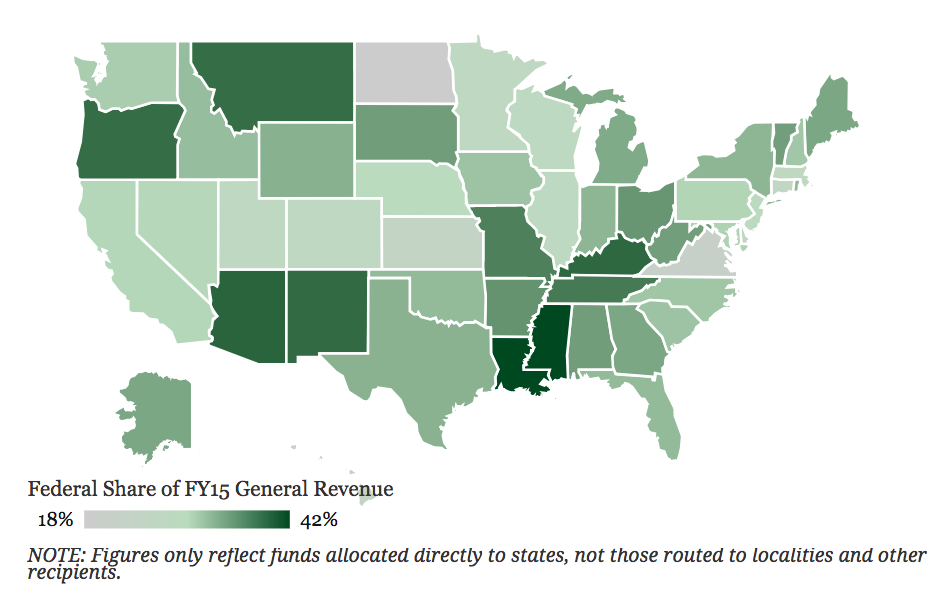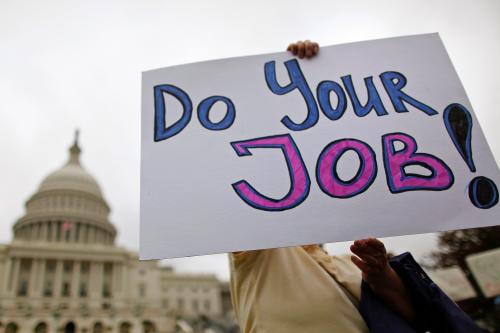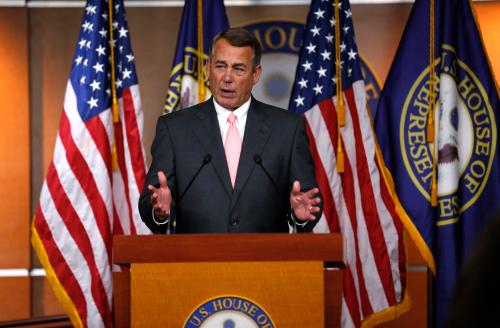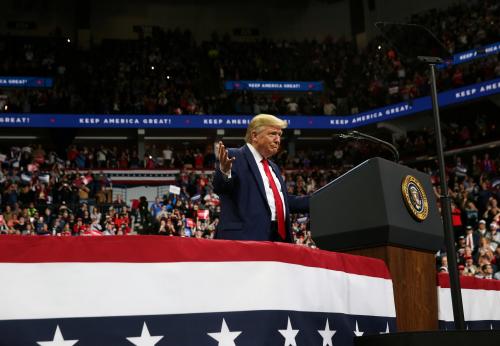As the deadline for yet another shutdown approaches, conservatives, even more than liberals, should try to avoid a second shutdown. For many decades now, conservative politicians have been very successful at convincing Americans that the federal government is a large, bloated bureaucracy that wastes their tax dollars. But during every major government shutdown Americans get a civics lesson about what the federal government and the people who work for it actually do. After the three most recent and longest shutdowns—the one in 1995-6 that lasted 21 days, the one in 2013 that lasted 16 days, and this year’s record-breaking, 35-day shutdown—no one was clamoring for smaller government, and no one was insulting civil servants.
This stands in marked contrast to the rhetoric that has come from successful conservative politicians in recent years. Often, the conservative description of the federal government has fallen on sympathetic ears, but that antipathy toward the federal government doesn’t extend to state and local government. For many years now the public has expressed much more support for state and local government than they have for the federal government, as the following research from Gallup shows. Citizens trust their local government most, their state government next and the federal government the least in both international and domestic affairs.
There are two interesting ways to understand these findings. The first is that while citizens don’t much like the federal government as a whole, when asked about its component parts they are quite enthusiastic. The Post Office, the National Park Service, and the Centers for Disease Control all get positive ratings above the 70 percent mark and many others, from NASA to the FBI to the Department of Defense get positive ratings above the 60 percent mark.
The second way to understand this graph is to realize that average citizens understand what the local government does, and to a lesser extent, what the state government does. But when the federal government shuts down it becomes apparent that the federal government is one big ATM machine making possible functions that are perceived as state and local. Take something as local as roads. According to Governing Magazine, most states get a pretty big piece of their road budget from the feds. For instance, 67.3 percent of Wyoming’s roads spending comes from the federal government as does 49.5 percent of Colorado’s road spending. Even though voters call their mayor about potholes, a big piece of the financing for roads comes from the national government.
Most public welfare comes from the federal government even though states and counties pass it out. Ohio, for example, gets 92.2 percent of its public welfare spending, mostly driven by Medicaid, from the federal government.
The following map is color-coded by the federal share of a state’s revenue, which ranged from lows of 18 percent to highs of 42 percent. On average, federal aid makes up “nearly a third of all states’ general fund revenues in fiscal year 2015.”
In other words, the government people see and like is funded to a large extent by the government that they don’t like. This is especially true in some of the states that Trump won and it becomes very clear during extended shutdowns.
The federal government’s reach also extends beyond state and local governments to non-profits that most people like. Take Catholic Charities, one of the largest charities in America. A 2014 study found that $2.8 billion came from government sources, out of a total of $4.5 billion for their 177 member agencies.
The federal government is also a critical player in the country’s economy. From the agencies that measure economic indicators like unemployment and GDP growth to food safety inspectors to the Federal Aviation Administration, the federal government provides the infrastructure for a modern economy. Air safety and air traffic control always come front and center during a shutdown. It was no accident that President Trump caved and re-opened the government shortly after LaGuardia airport in New York City, one of the nation’s busiest, said it was going to have to shut down because staffing shortages were creating safety concerns.
The shutdown that just ended was the longest in history at 35 days and it, like every other lengthy shutdown, ended up showing the public what exactly the federal government spends its money on. The result was an unprecedented amount of public support for those federal bureaucrats who conservative politicians are so fond of demonizing.
Going forward conservatives should listen to one of their most famous and most thoughtful leaders, Grover Norquist, founder of Americans for Tax Reform, and someone whose small-government credentials are impeccable. In a recent Washington Post article he said that shutdowns were not the way for conservatives to lead a debate about the size of government. “You don’t cut the federal budget,” he said, “You reform the federal government to cost less.”
If conservatives truly want a smaller government they should take Norquist’s advice and enter into a serious debate over what the federal government should stop doing. This will be difficult and controversial but conservatives need to recognize that across-the-board cuts and government shutdowns only serve to make it more difficult for the government to do what Americans want it to do, and, paradoxically, they increase Americans’ support for the federal government. Since the watershed 1994 elections, when Democrats lost control of the House of Representatives for the first time in 40 years, Republicans have controlled the House for 20 years and the Senate for 16 years. And yet, over that period of time federal outlays per capita have risen. Maybe it’s time to try something new?
The Brookings Institution is committed to quality, independence, and impact.
We are supported by a diverse array of funders. In line with our values and policies, each Brookings publication represents the sole views of its author(s).









Commentary
Why conservatives should avoid government shutdowns
January 31, 2019